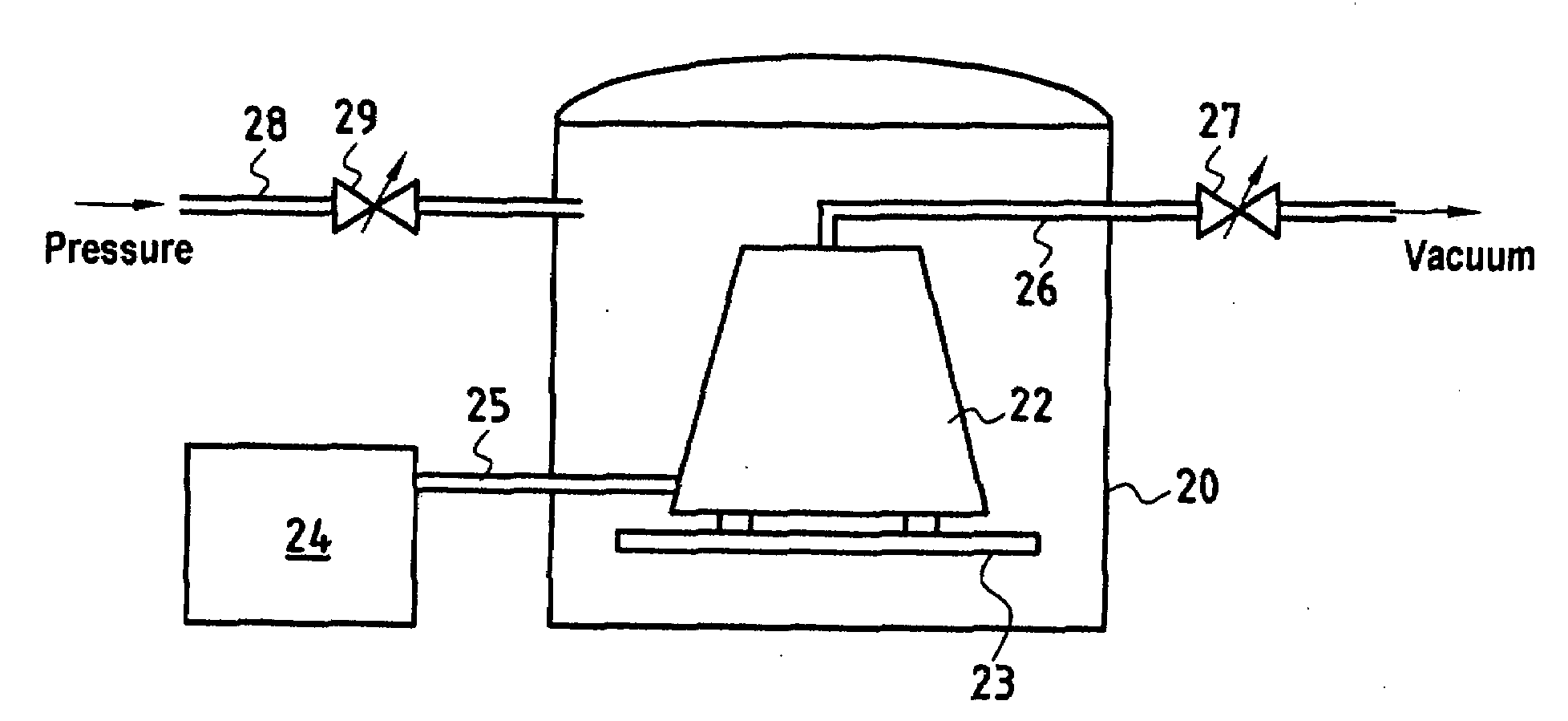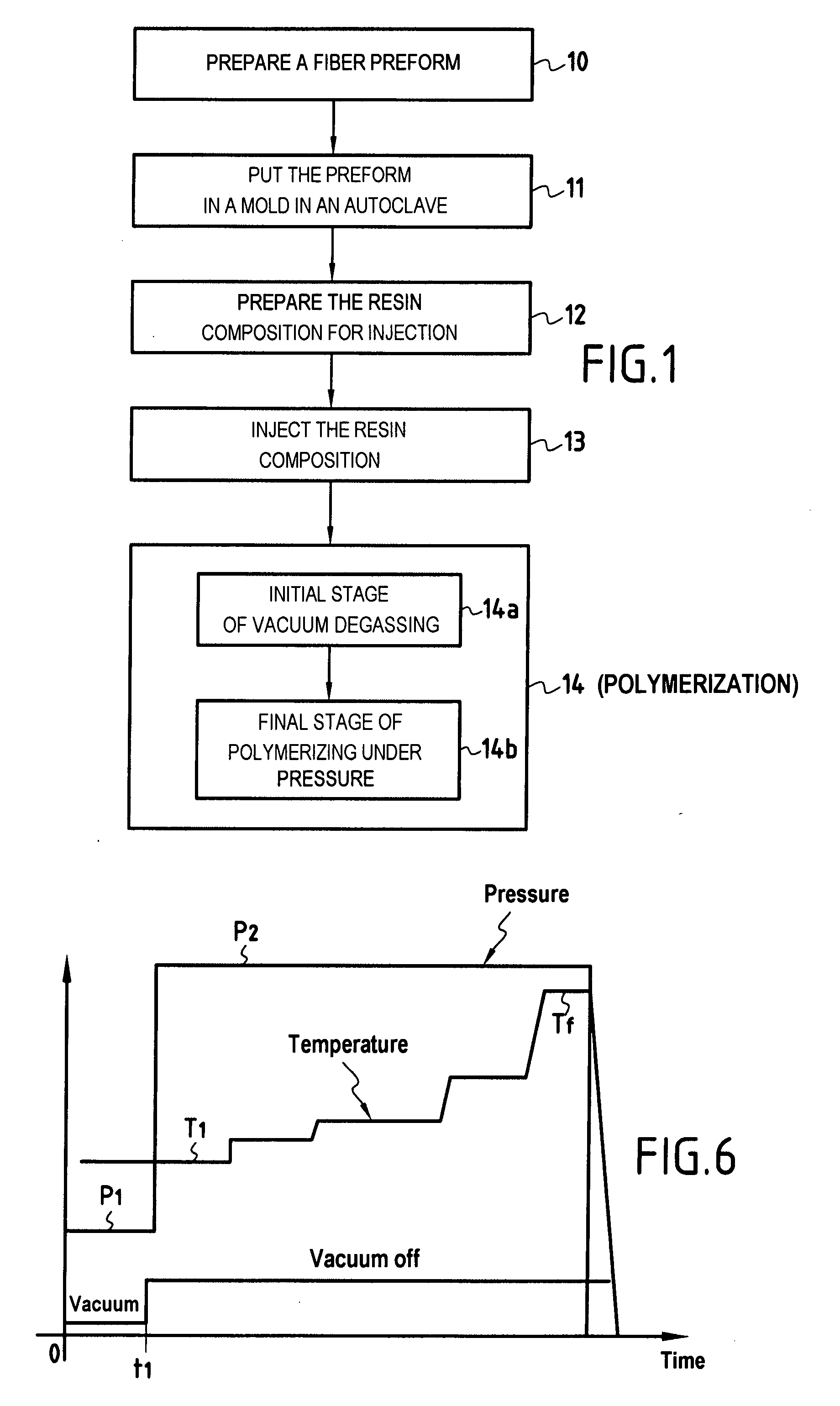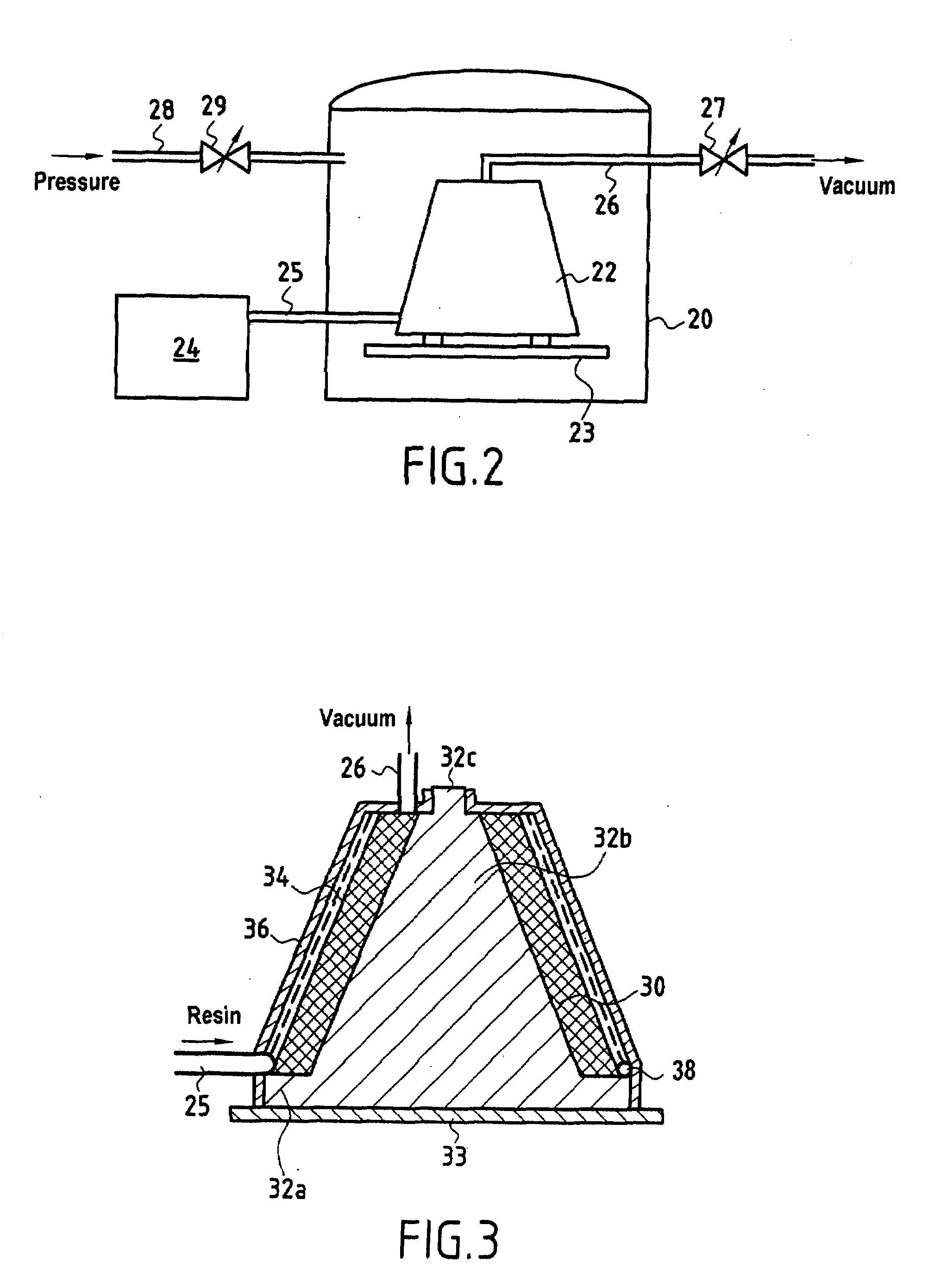Densification of Fibrous Structures by Resin Transfer Moulding for Making Thick Parts of Composite Material
a technology of resin transfer molding and fibrous structure, applied in the field of densification, can solve the problems of difficult to obtain composite material parts presenting little residual porosity, difficult to obtain composite material parts with little residual porosity, and significantly increase the duration and processing costs. , to achieve the effect of reducing the volatile conten
- Summary
- Abstract
- Description
- Claims
- Application Information
AI Technical Summary
Benefits of technology
Problems solved by technology
Method used
Image
Examples
Embodiment Construction
[0032]A first step 10 of the method consists in preparing a fiber structure that is to constitute the reinforcement of a composite material part that is to be made. The fiber structure may be in the form of a three-dimensional (3D) fiber preform of a shape that corresponds to the shape of the part that is to be made, and itself presenting sufficient cohesion to enable it to be handled without losing its cohesion. In well-known manner, such a 3D fiber preform may be a felt or it may be obtained by three-dimensional weaving, knitting, or braiding, or by superposing two-dimensional (2D) plies and bonding them together. The 2D plies may be in the form of woven fabric, or of unidirectional (UD) sheets, or multidirectional sheets made up of a plurality of UD sheets superposed in different directions and bonded to one another. 2D plies can be bonded together by needling, stitching, or indeed inserting rigid elements or yarns through the plies.
[0033]By way of example, reference can be made ...
PUM
| Property | Measurement | Unit |
|---|---|---|
| viscosity | aaaaa | aaaaa |
| pressure | aaaaa | aaaaa |
| viscosity | aaaaa | aaaaa |
Abstract
Description
Claims
Application Information
 Login to View More
Login to View More - R&D
- Intellectual Property
- Life Sciences
- Materials
- Tech Scout
- Unparalleled Data Quality
- Higher Quality Content
- 60% Fewer Hallucinations
Browse by: Latest US Patents, China's latest patents, Technical Efficacy Thesaurus, Application Domain, Technology Topic, Popular Technical Reports.
© 2025 PatSnap. All rights reserved.Legal|Privacy policy|Modern Slavery Act Transparency Statement|Sitemap|About US| Contact US: help@patsnap.com



